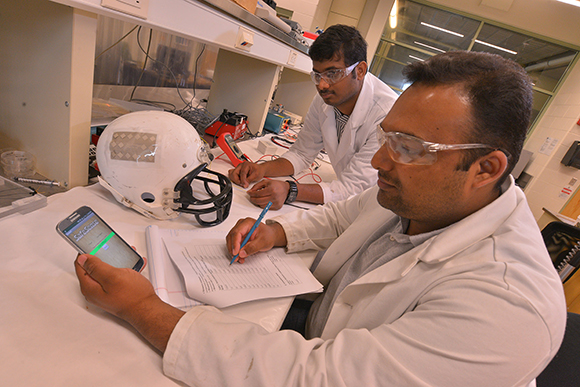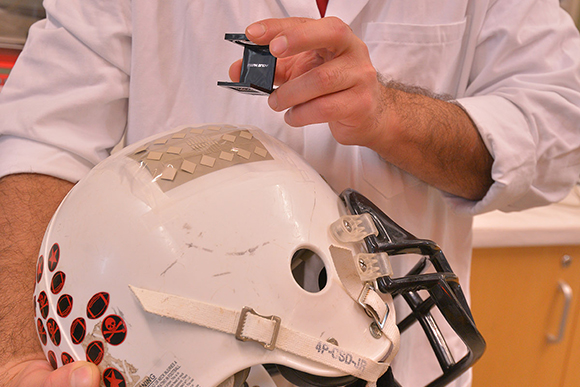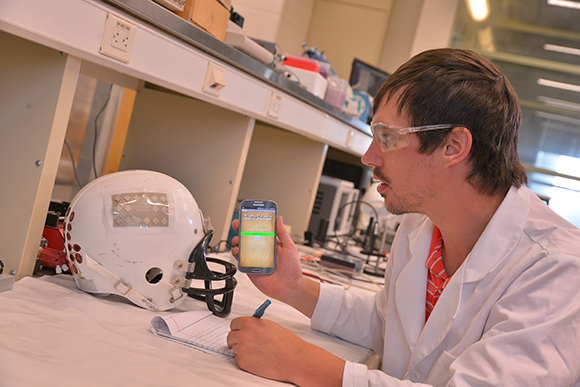Helmet sensors to detect concussion under development at WMU
Today’s football coaches are being trained to recognize and prevent concussions at practice and during the game. Now Western Michigan University students have helped design a device that goes in a football helmet to monitor the severity and location of a blow to the head that could take the guess work out of such calls.
Using printed electronics on a flexible organic plastic layer that covers the inside of a helmet, WMU engineering students have designed a pressure sensor that measures the severity of a hit.
Now the team is seeking investors and grants to keep their startup moving. SafeSense Technologies LLC recently was named one of the top eight finalists in a competition at the University of Michigan that drew ideas from 300 teams.
“Based on that (ranking), we believed we had a niche technology and that we should establish a company, so we did,” says Dr. Massood Atashbar, professor of electrical and computer engineering and the team’s faculty advisor.
There are competitors on the market, but none of those currently available can fully map the impact forces in precise locations as SafeSense does.
The project requires additional research and development, however, before it is ready for the marketplace, which is why grant funding is being sought. After it is more fully developed, students hope a venture capitalist or angel investor will step forward.
The sensor has applications not only on the football field but also in the battlefield. It takes away the possibilities of inaccurate judgment calls made by coaches or players as they assess of the severity of a hit.
The way it works is that data from the sensor inside a football player’s or soldier’s helmet can be relayed over Bluetooth to a smartphone so a team leader would instantly know the severity of an impact. That data also could be stored on a cloud-based server kept as part of a complete history.
The shock sensor would be especially valuable in sports, where players tend to under-report symptoms, Atashbar says, and could be a valuable tool in other sports, like lacrosse or hockey.
“The players, because of the pressure, try to ignore the injury they have endured and continue playing,” he says.
The WMU students on the design team–three doctoral students in electrical engineering and one master’s student in chemical and printing engineering–have been working on the sensor for nearly two years, are excited about its potential and have found creating it also has been a learning experience in starting a business.
“We’ve learned a lot about the business side,” says Binu Baby Narakathu, a doctoral students, who has assumed a leadership role in the project.
“It was very new for us, because we’re from the engineering side,” says Ali Eshkeiti, one of the doctoral students. “We didn’t know anything about business, how to talk about the product or what kind of words we should use.”
Source: Mark Schwerin, Western Michigan University

















